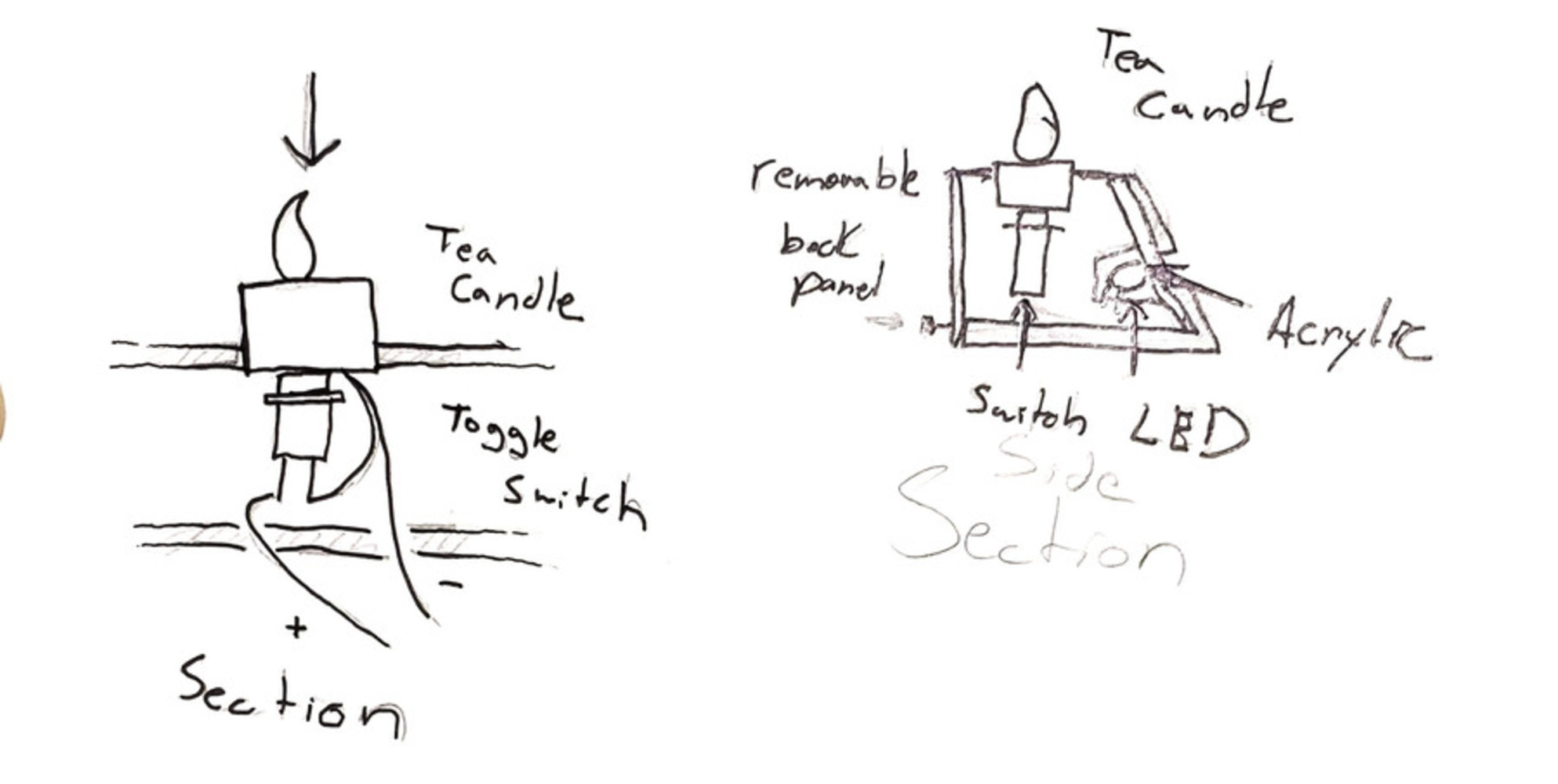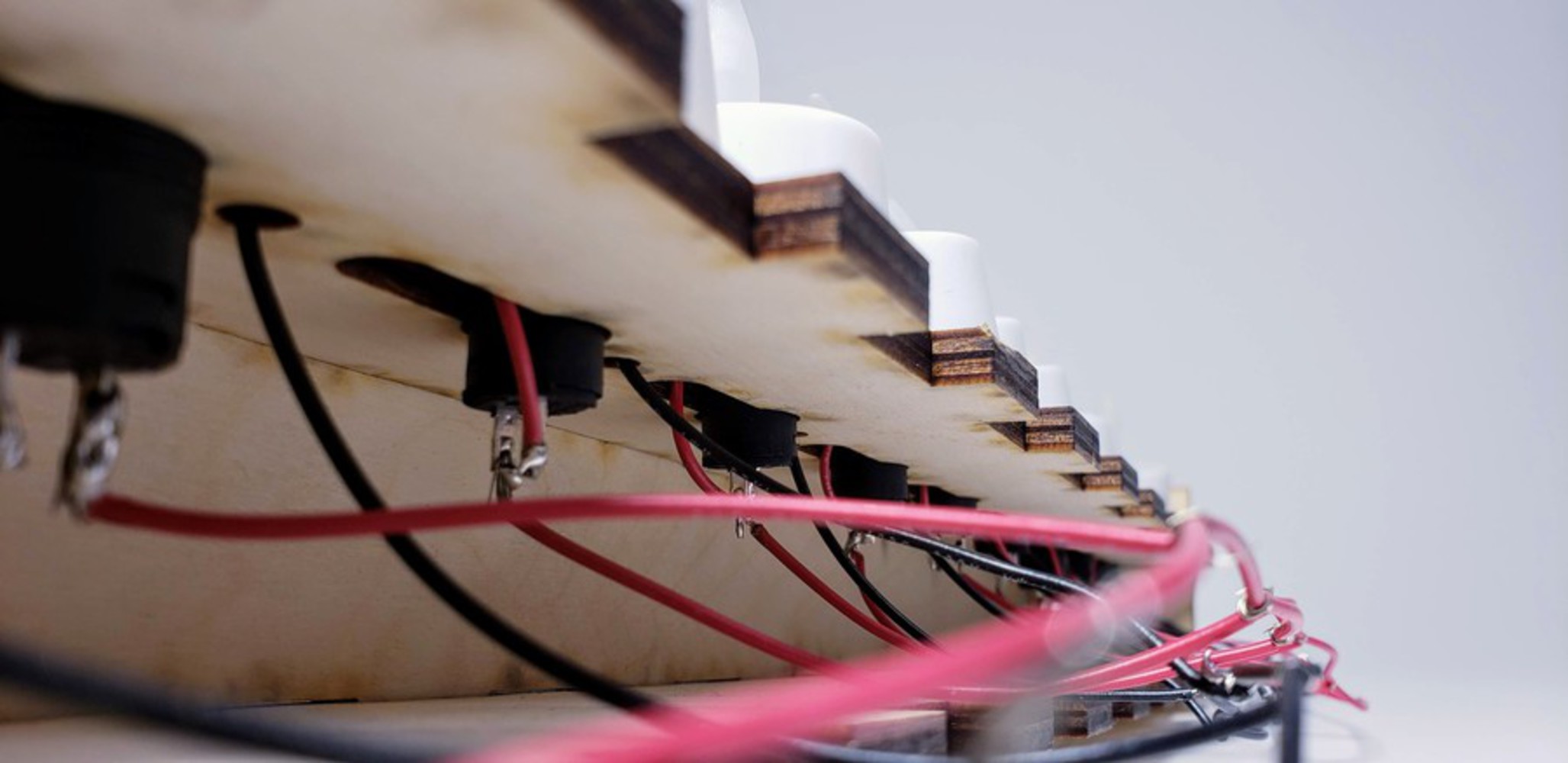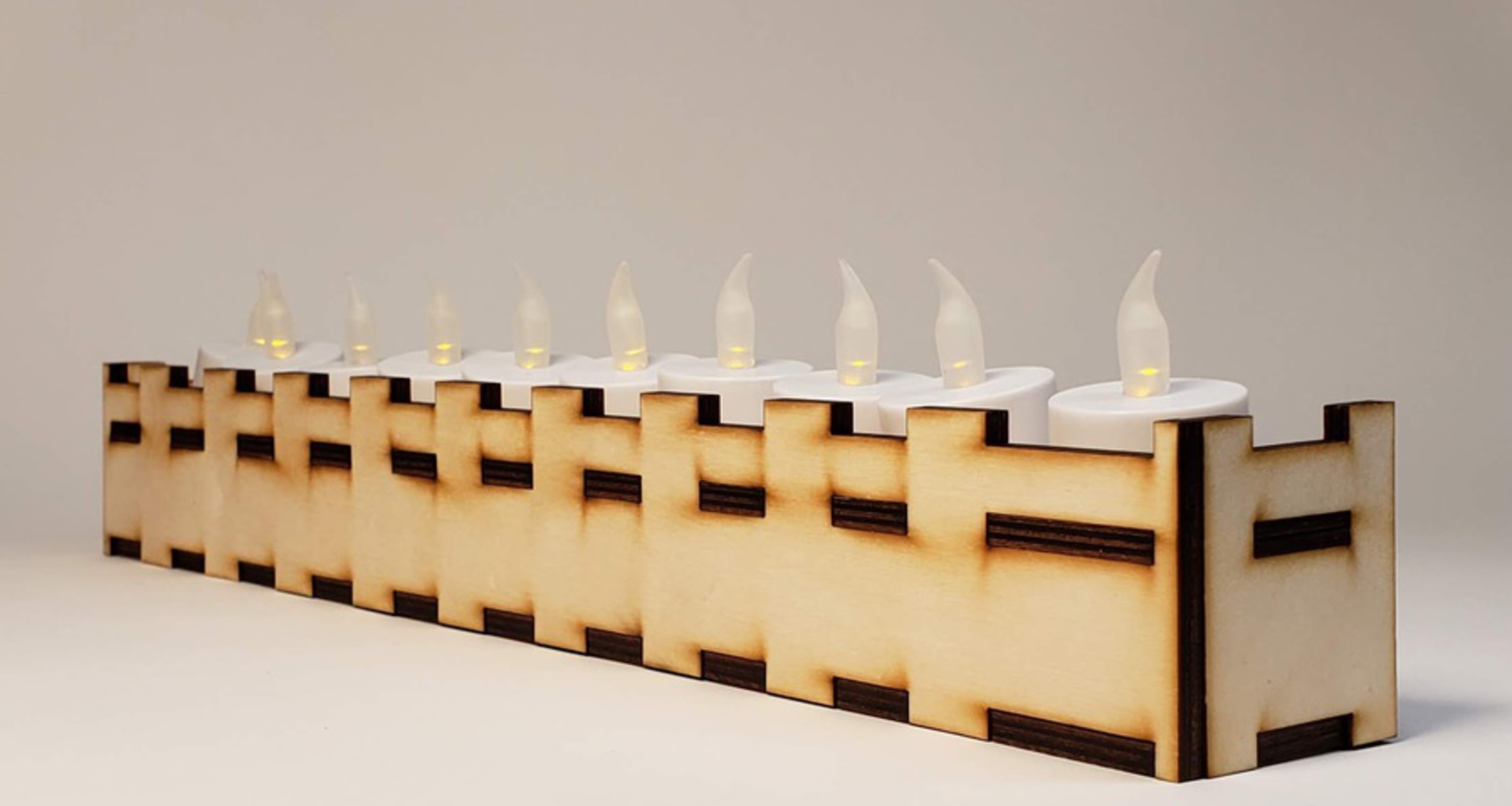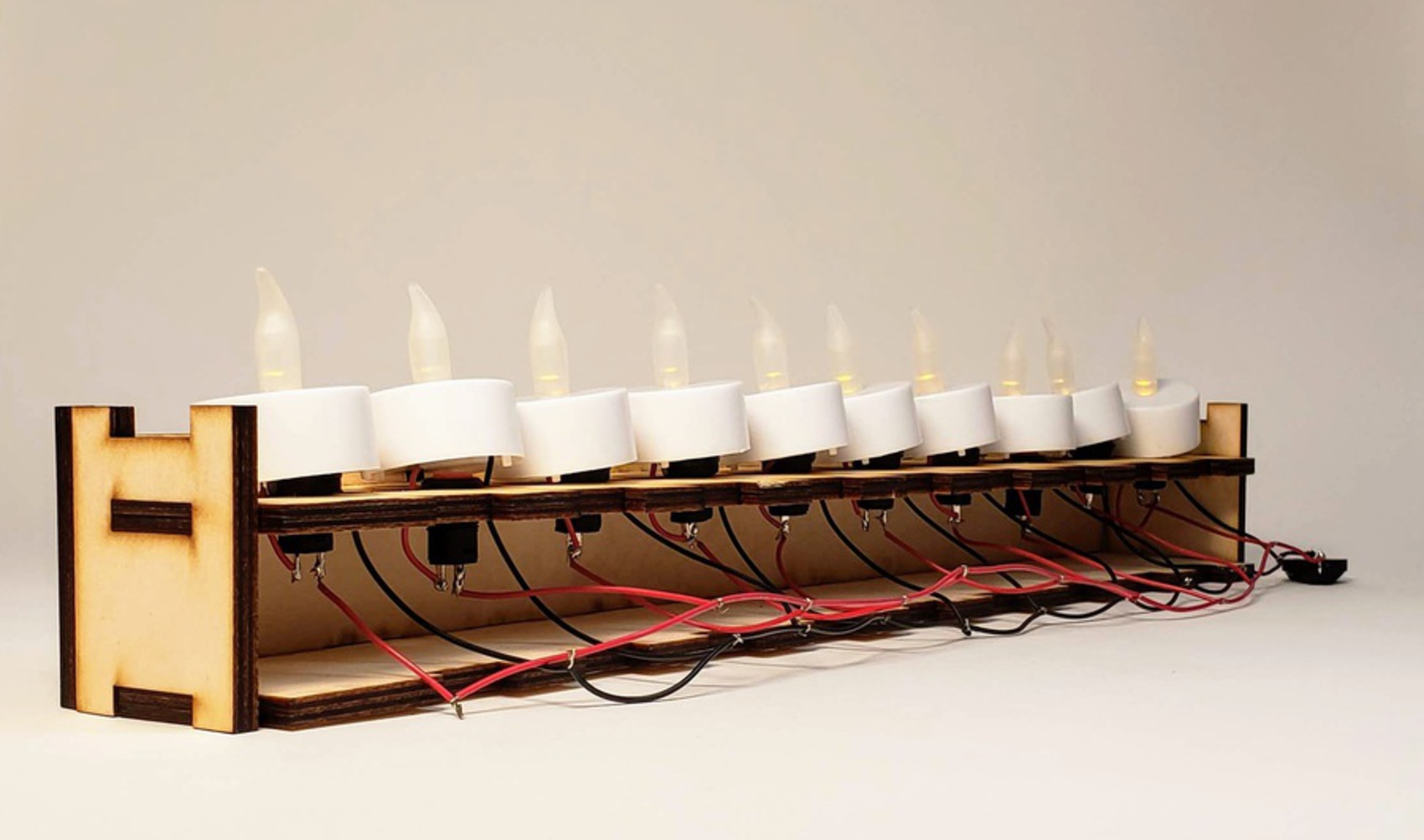Intention
Remembrance Candles bring a symbol of worship to the home. These 31 led candles evoke the imagery of the religious votive candle, and encourage the user to remember special days. These could be holidays and other mundane events. However, the intention is to focus on days the user has a deep emotional tie to: anniversaries of marriage, birth, or death. When placed near the entrance of the home, these candles remind users before they leave and when they return home, letting them reflect on these noteworthy events and how things have changed.
Remembrance Candles is powered by LED Tea candles powered by a 5v wall outlet power converter, which passes through a toggle switch mounted under the candle. By pushing down on the light, the switch either allows power to flow into the LED or not, making the candles themselves the buttons that are pressed. an onboard Particle Photon acting as a calendar and a programmable LED strip beneath the candles show which candle represents the current day, and allows users to save candle configurations by month for a minimal transition.
The 31 candles are arranged on 3 rows, going 10 - 11- 10. This deliberately shies away from the weekly unit, instead focusing on the approach of days of reflection, and their number in the current month. This also discourages users from displaying mundane events to heighten the importance of those events that are displayed.
This device could possess an optional digital interface/app that connects to a digital picture frame, displaying images related to the circumstance that one wishes to remember. However, that would require more input on the user's end, and in order to streamline the user experience and minimize the work they'd have to put in at a minimum for the device to function (after all, the less intrusive the device, the more likely a user is to integrate it into their daily routine).




